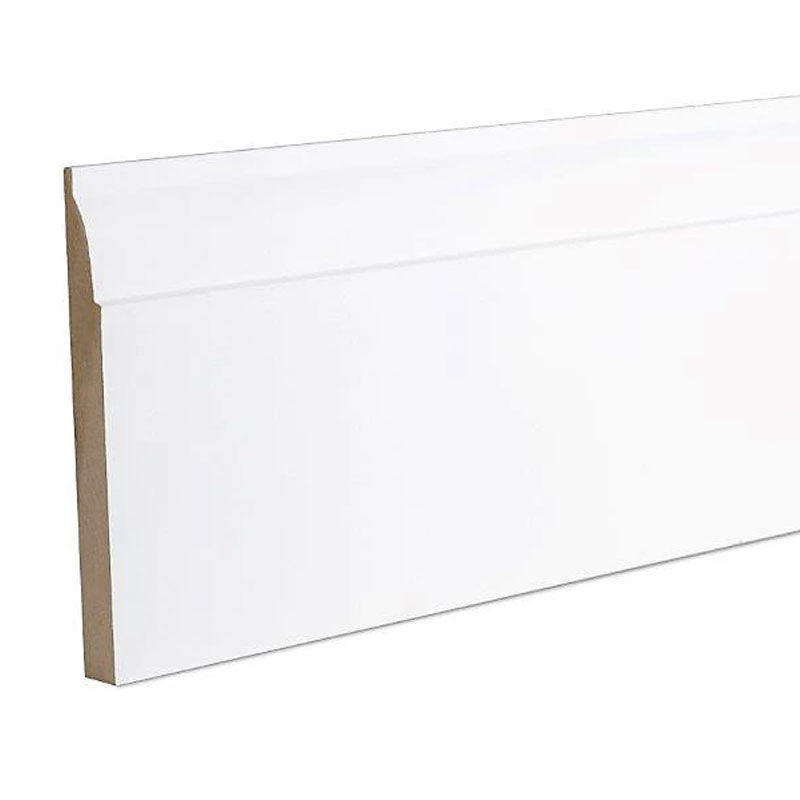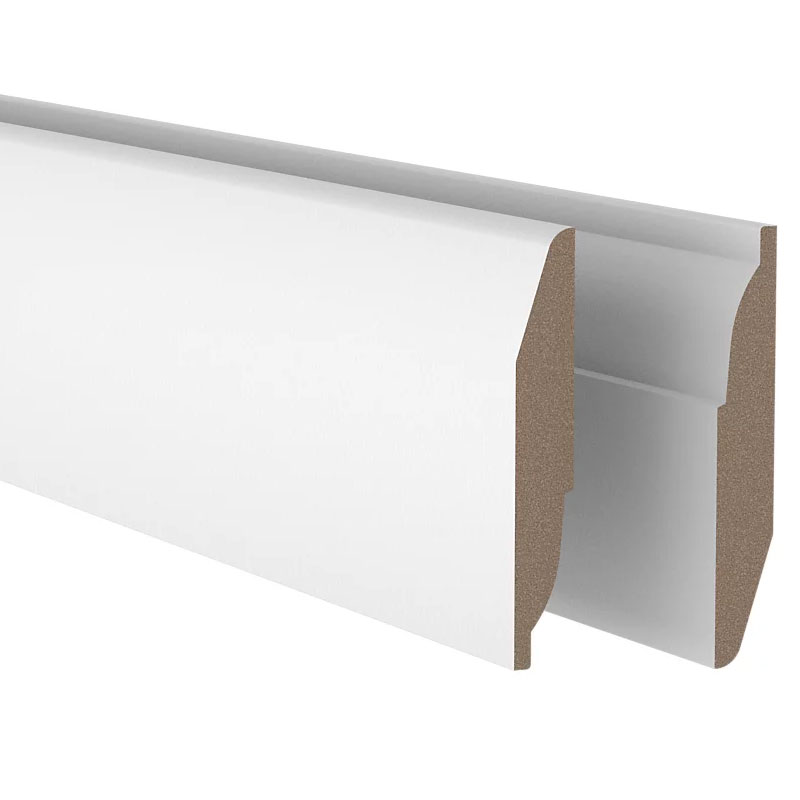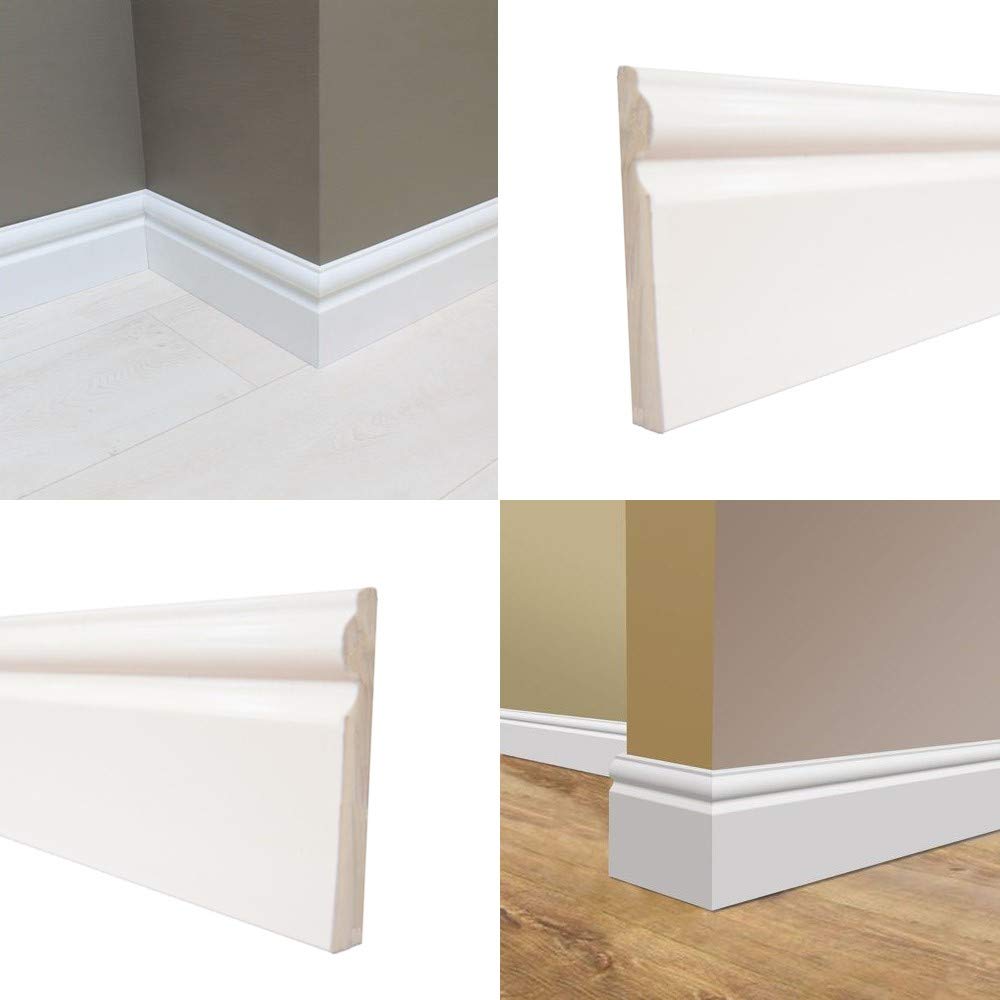Is pre-painted skirting board worth the extra cost? We have the answer on whether or not it'll actually save you time
We help you decide if it's the right option for your next decorating project

Skirting boards are an important but often overlooked detail when finishing a room. Choosing the right style and colour can significantly impact the overall appearance of a room. If this means removing the skirting and replacing it, then so be it. However, be prepared for a messy and time-consuming DIY task.
To speed up the installation process, pre-painted skirting board should be on your be on ‘to consider’ list. They come primed and painted, so all you need to do is install them, which is pretty straightforward. But are they worth the extra cost over standard skirting boards? Find out the pros and cons before you decide.

Paul Kerr is an experienced branch manager skilled in management, retail, sales, and home building advice. Through Beatsons he has seen everything from outdoor patio organisation to full rebuilds!
Is pre-painted skirting board worth the extra cost?
This depends on a number of factors, including budget, how much time you have and how good your DIY skills are. However, Paul Kerr, Building specialist at Beatsons points out a few of the pluses, “Pre-painted skirting boards can be worth the extra cost if you want your room to be as professionally finished as possible. These boards are pre-sanded, shaped, coloured and quite easy to place down.”
And, they have another added bonus, continues Kerr, “If you're hiring trades to add them, it cuts down on labour time.” He adds, “It also reduces the need to buy paint, brushes, etc., so it can be almost at the same price point if these tools need to be purchased for the job as well.”
The cost of pre-painted skirting board can be prohibitive, with boards typically costing 20-25% more than bare skirting board. But this can be weighed up against the time you will save. And, Kerr points out, “Other than the higher cost, is the fact that you might not have complete control of the colour tones and customisation as they are made to the manufacturer's specifications, so they may not totally match your personal brief.”
Personally, with years of DIY paint projects under my belt, I would say no to finished skirting boards. My recommendation is to hit the middle ground and invest in pre-primed boards. These allow you to easily cover up any imperfections and eliminate the need to repaint an already finished surface.
Try these pre-painted skirting boards on your next project

A pre-primed MDF skirting board that is ready for adding a couple of coats of your favourite finish. It features Ovolo styling and comes in 2.4m lenghts and is 14.5mm thick.

Fully finished with satin paint for a quick installation this MDF skirting board boasts dual profiles - Chamfered and Ovolo - to give you more options.

Made from UPVC this white plastic skirting board boasts the Ogee / Torus profile. It is 95mm high and 12mm thick giving it a strong, durable and easy to clean finish.
Types of pre-painted finishes
Here we look at the common options.
Bring your dream home to life with expert advice, how to guides and design inspiration. Sign up for our newsletter and get two free tickets to a Homebuilding & Renovating Show near you.
Primed
Pre-primed skirting board will typically have a couple of coats of primer applied with a spray gun. This makes it suitable for adding a couple of your chosen top coats, e.g gloss, satin or eggshell.
Gloss
Gloss finished pre-painted skirting board follows the same pattern as other types. It will typically come with two coats of primer and a single coat of gloss to give a high sheen finish.
Satin
This follows the same process as pre-painted Gloss skirting boards but is finished with a satin paint that provides a subtle mid-sheen finish, offering durability, wipeability, and the ability to hide small imperfections.
Eggshell
This will typically have two coats of primer, a single coat of eggshell, which will leave a low-to-midsheen finish. It's ideal for hiding imperfections, yet still durable and washable.
Unprimed
This type doesn’t fall under the pre-painted moniker, but is still a consideration when buying skirting boards. They are an obvious choice if you want a natural finish that will be protected with varnish. Alternatively, if you want to ensure a long-lasting, durable finish, unprimed is the choice for starting from scratch.
Issues with pre-painted skirting boards
On the surface, pre-painted skirting boards are a great time-saver. Pre-primed skirting boards mean you only need to add a top coat, while fully finished boards are ready to install. But there are a few issues to look out for.
Damaged and dirty
When buying pre-painted skirting boards (especially online), you don’t know what condition they will turn up in. They can turn up dirty and damaged. Even minimal damage, such as dents and chips, can mean you need to repair and repaint.
Paint quality
You don’t get to choose the quality of the paint that is used on prepainted skirting boards. If painting from scratch, you can choose a better quality paint if you desire. Also, pre-painted boards are sprayed, which uses less paint and isn’t typically as durable as a well-prepped and painted skirting board.
Lack of colours
White is the popular choice for skirting boards, and it's not easy to find pre-painted skirting boards in different colours. If white isn’t your preferred choice, you’ll want to avoid pre-painted skirting boards. However, you can repaint any colour you want in the future.
Painting pre-primed skirting
Painting pre-primed skirting boards is a very similar process to painting standard skirting. However, there are a few subtle differences that should be followed.
Pre-primed skirting shouldn’t need to be sanded thanks to its factory finish, but it may need to be cleaned, explains Eric Hargreaves, Owner of Your Choice Builders, “Pre-primed boards rarely need sanding, though a quick wipe or light sand can remove dust before painting.”
Two top coats will typically be needed to get a good, even and consistent finish. When the first top coat is dry, lightly sand with a fine-grade sandpaper; 240 grit is a good choice.
For a finish, you can choose whatever paint you want, but Hargreaves says, “Durable water-based or acrylic satin paints work best, offering quick drying and strong resistance to scuffs.”
Eric Hargreaves has dedicated 40 years to mastering the home improvement industry, building a reputation as one of the most experienced and trusted professionals in the field. His career spans everything from traditional renovations to cutting-edge design and build projects
Do I need to undercoat pre-primed skirting?
The purpose of the pre-primed skirting board is to seal the surface of the board, ready for painting the skirting boards. This typically means you don’t need an undercoat, explains Hargreaves, “An undercoat on pre-primed skirting boards isn’t required, but it does help if your topcoat is a strong or contrasting colour.”
If you are using the classic white colour for your skirting boards, Hargreaves says, “The primer already provides a smooth base for paint adhesion, so one or two coats of a good finish are usually enough.”
However, if using a darker colour, he says, “Using a light undercoat in this case prevents blotchiness and keeps the colour even, especially with darker shades. It’s a simple extra step that improves the finish without adding much time or cost.”
How to hide cuts/joins
When installing skirting boards, they will need to be cut to size to fit the space. This will expose the unpainted edges, and if cut poorly, will leave a visible gap and ragged edges. So first, you need to make sure that you get a good, clean cut. Using a mitre saw (like this DEWALT DWS774-GB Slide Mitre Saw from Amazon) will give clean, accurate cuts.
However, if you need to cover any small gaps, use a painter's caulk (like this Soudal Decorator Caulk from Amazon). Hargreaves says, “Apply caulk to fill any gaps, smooth it out, and paint over once dry. This leaves a seamless, professional finish that looks clean and consistent throughout.”
If you are using white caulk on white skirting boards, you may not need to paint. Check when the caulk is dry and make a decision.
Skirting boards are everywhere in the home, so it's important to consider matching skirting boards with your favourite painted stairs ideas and any hallway panelling ideas you might have.
Steve Jenkins is a freelance content creator with over two decades of experience working in digital and print and was previously the DIY content editor for Homebuilding & Renovating.
He is a keen DIYer with over 20 years of experience in transforming and renovating the many homes he has lived in. He specialises in painting and decorating, but has a wide range of skills gleaned from working in the building trade for around 10 years and spending time at night school learning how to plaster and plumb.
He has fitted kitchens, tiled bathrooms and kitchens, laid many floors, built partition walls, plastered walls, plumbed in bathrooms, worked on loft conversions and much more. And when he's not sure how to tackle a DIY project he has a wide network of friends – including plumbers, gas engineers, tilers, carpenters, painters and decorators, electricians and builders – in the trade to call upon.

